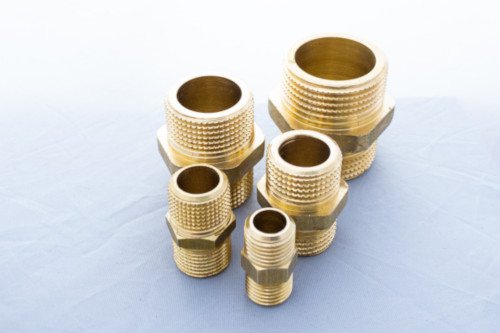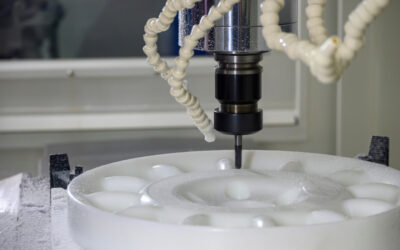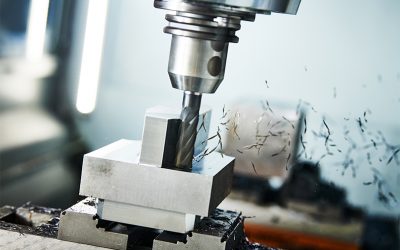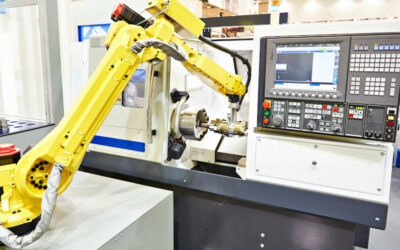Are you looking for a material with good mechanical properties, strong corrosion resistance, good malleability, high conductivity, and even good acoustic characteristics? If so, you should consider brass because this remarkable metal has all those properties in one.
Brass is an alloy of copper and zinc, the proportions of which can be varied to achieve different properties for the overall alloy. For that reason, brass is widely used in various industries and for applications ranging from musical and electrical to germicidal and antimicrobial.
This article will not only introduce you to the pros and cons of brass as a CNC machining material, but it will also help you to determine the best brass grades for use in your next project.
Brass in CNC Machining: Advantages and Drawbacks
As we mentioned before, brass provides advantageous properties that make it an ideal option for a variety of applications. Why is that? When it comes to CNC machining, there are a few fundamental properties that make this material phenomenal.
The first one is the overall machinability. In simple terms, this property refers to how easy it is for the material to be machined. Brass is one of the easiest materials to machine. While many consider free machining steels the comparison baseline for machinability, brass alloys generally have better machinability.
The strength and hardness properties of brass are also useful for a wide range of applications. Although brass has good strength, it is relatively soft compared to other materials such as steel alloys and titanium and is generally weaker than them.
However, this contributes in part to its much better machinability over those materials. So for applications that do not require the very high strength and hardness of steels or titanium, brass can be a worthwhile materials selection.
Brass alloys exhibit the same favorable strength and hardness characteristics you would expect from various aluminum alloys. They also boast remarkable corrosion resistance, especially when alloyed with small amounts of aluminum.
While they do see use in some electronics — thanks to good overall conductivity — one of the significant considerations for brass over aluminum tends to be how visually appealing brass is without the need for additional coatings.
Best Brass Grades for CNC Machining
Brass, in its simplest form, is a combination of copper and zinc. However, alloying brass with combinations of other metals such as tin, aluminum, lead, and iron can produce brass alloys with unique characteristics.
Even in small proportions (<0.05%), the addition of those elements can also result in enhanced properties. For instance, a small amount of tin provides a brass alloy with exceptional resistance to seawater corrosion.
Numerous brass alloys are used in CNC machining, with a wide variety of properties, and they are useful for distinct industries. The table below shows 10 of the most important brass alloys for you to consider for CNC machining projects:
| Alloy | Common Name | Description | Advantages | Disadvantages | Applications |
|---|---|---|---|---|---|
| C360 | Free Machining Brass | The zinc-copper alloy with the highest machinability. Also has excellent strength thanks to its content of lead. | Exceptional machinability, excellent strength, and good corrosion resistance. | Sensitive to acids, possible environmental impact from lead, lead content can cause a cracked surface finish in some instances. | Electrical equipment, plumbing components, screw machine parts, and musical instruments. |
| C230
±85% Cu ±15% Zn <0.05 Pb |
Red Brass | It is significantly stronger than yellow-gold colored brass. | Good machinability can be worked cold or hot. Excellent corrosion resistance. | Requires careful treatment and cleaning during its use and can be sensitive to corrosion under severe environments. | Architecture, jewelry, light fixtures, steam iron parts, sprinklers, and decorative parts. |
| C220
±90% Cu ±10% Zn <0.05 Pb |
Commercial Bronze | Bronze-reddish colored, this brass is widely used in the architectural world. | Can be worked cold. Fair-to-good machinability relative to C360. Good ductility, strength, and hardness. Excellent corrosion resistance. | May require annealing if exposed to atmospheres that can induce stress corrosion cracking. | Architectural uses and weather-stripping. |
| C353
±62% Cu ±36% Zn ±2% Pb + Fe |
High Leaded Brass – Engravers’ Brass | Known for being both strong and wear-resistant while maintaining good machinability. | Excellent machinability (less than C360), excellent strength, corrosion, and wear resistance. | Poor to fair cold and hot working. Not ideal for welding. | Wheels, gears, valve stems, couplings, adapters, watch parts. |
| C464
±59% Cu ± 40 Zn ± 1 Sn + Pb |
Naval Brass | Well known for its exceptional corrosion resistance thanks to the additions of tin. | Fair to good machinability compared to the C360. Excellent strength and corrosion resistance, and can be hot worked. | Prone to dezincification with time, leading to structural cracks on the surface of the alloy. | Naval applications, wear plates, fasteners, bushings, condenser tubes |
| C770
±55% Cu ±27% Zn 18% Ni |
German Silver / Nickel Silver | Known for its silvery appearance, yet it does not have silver at all! | Excellent electrical and thermal conductivity, high strength, excellent formability, and good corrosion resistance. | Fair machinability compared with C360, poor capacity for being formed hot. | Electronic applications, battery casings, packaging, lids, musical and ornamental applications. |
| C365
±60% Cu + Ag ±39% Zn ±1% Sn + Pb + Fe |
Brass Plate / Leaded Muntz Metal | Named after George Fredrick Muntz, who commercialized the alloy following his patent in 1832. | Good machinability and excellent corrosion resistance and strength (similar to C464). | Limited cold formability, not recommended for welding. | Tube sheets for condensers and heat exchangers, baffles, support sheets. |
| C330
±66% Cu ±33.5% Zn ±0.5% Pb |
Low Leaded Brass | A brass alloy containing relatively low amounts of lead. | Good strength, good machinability, and strong water corrosion resistance. | Difficult welding, sensitive to highly corrosive conditions (acids) | Tubing, ammunition primers, power cylinders, pumps, liners. |
| C385
±56.5% Cu ±40% Zn ±3% Pb <5% Fe |
Architectural Bronze | Although it is well known as architectural bronze, this alloy is actually a brass! | Good machinability, great finishes, good corrosion resistance in non-marine conditions. | Low corrosion resistance in marine conditions, poor cold forming. | Interior applications, shower doors, bathroom partitions, fireplace lamps, valves. |
| C443
±70% Cu ±29.85% Zn ±0.05% Sn ±0.05% Pb ±0.05% As |
Admiralty Brass | Also referred to as arsenical brass, this alloy contains tin, lead, and arsenic which together provide good resistance to corrosion in brackish water and saltwater. | Excellent cold workability for forming and bending and strong corrosion resistance. | Fair to poor weldability, poor hot formability. | Condenser tubes, evaporator and heat exchanger tubes, distiller tubing in oil refineries, heater equipment. |
Is Brass the Right Choice for Your Project?
The various brass alloys showcase the excellent potential these metals have for use in a wide range of applications. Aside from being extremely economical to produce parts by machining, brasses offer good strength and the potential for excellent corrosion resistance, along with an assortment of other characteristics.
For example, if your product will be used in a saltwater environment, you may want to avoid C385 and use either C464 or C443 instead.
Ultimately, the requirements for your final product will help you to narrow down the options. Then once you’ve chosen the most suitable materials for your project, you can rely on our service experts to help you out with the machining production! Come and chat with us and check our CNC machining services.




